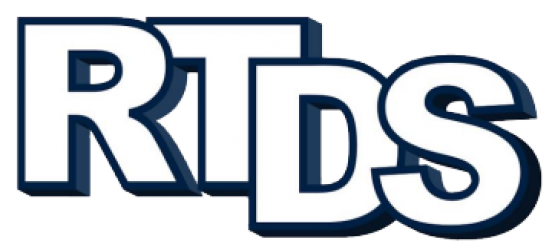Getting your Commercial Driver’s License, or CDL, can unlock a lot of career opportunities. Whether you’re starting fresh or switching paths, driving a truck is one of those jobs that’s always in demand, especially around major cities like Las Vegas. It gives you the chance to travel, earn a decent income, and build a long-term career on the road. But before you can get behind the wheel, there’s a clear process you’ll need to follow.
This guide lays out every step needed to get your CDL in Las Vegas. Each phase moves you closer to your goal, from understanding requirements to passing the final test. If you’re feeling unsure about where to start, don’t worry. It’s less complicated than it may seem once you break it all into small steps.
Understanding CDL Requirements In Las Vegas
Before you jump into training or sign up for any test, it’s important to know if you’re eligible. Every state has its own requirements. In Nevada, there are a few things to sort out right away:
– You need to be at least 18 years old to drive a commercial vehicle within the state and at least 21 if you’re planning to cross state lines
– Proof of Nevada residency is required. A utility bill, lease agreement, or paycheck stub usually works
– You must have a valid, current driver’s license
– A Social Security card or proof of your Social Security number is also needed
– You’ll need a medical examiner’s certificate showing that you passed a physical. The state wants to be sure you can physically handle long hours and operate heavy equipment
– Your vision must meet a certain standard. A quick eye exam will usually do the trick
Double-check that you have original documents instead of copies. That way, you avoid delays at the DMV or when applying for a learner’s permit. Meeting these conditions early saves time and lets you move to the actual training process quicker.
Choosing The Right CDL Class And Endorsements
Not all CDLs are the same, and not everyone needs the exact same one. Choosing the right license class depends on the type of driving you plan on doing. Here’s a basic breakdown to help you figure out which category fits:
1. Class A – This is for combination vehicles with a gross weight over 26,001 pounds, like tractor-trailers or big rigs. Most long-haul jobs need a Class A
2. Class B – This one is for single heavy vehicles, like dump trucks or buses
3. Class C – For smaller commercial vehicles carrying passengers or hazardous materials, often used for shuttle vans or specialty cargo carriers
Along with a base license, you might need endorsements depending on the job you’re aiming for. Here are a few common ones:
– T endorsement for pulling double or triple trailers
– P endorsement for driving passengers, like in a bus or van
– N endorsement for tank vehicles, which carry liquids or gases
– H endorsement for handling hazardous materials
Adding endorsements usually means taking extra written tests, so choose carefully based on your goals. For example, if you’re aiming for fuel delivery jobs, the tank and hazmat endorsements are often required. Take your time deciding. Picking the right class and endorsements upfront keeps your training focused and your career goals within reach.
Enrolling In A CDL Training Program
Once you’ve figured out the type of license and endorsements you need, the next move is getting the right training. Attending a professional CDL school sets you up with the skills and knowledge to get through the written and hands-on parts of the process. Classroom time helps you understand what’s expected on the written tests. Time in the yard and behind the wheel gets you ready for the real driving part. That kind of practice makes all the difference.
In most programs, you’ll start with the basics like vehicle inspection, safety checks, and backing techniques. Then, it shifts to road driving, which includes city routes, highways, and handling tough situations that you might run into once you get hired. Some schools also give you tips on shifting gears properly, logging hours, and managing time—things that matter once you’re on the road full time.
The length of training depends on the program you pick, but many offer day or evening classes to match your schedule. This works great if you’re trying to balance family or other jobs while you’re going through training. Just make sure you’re learning from qualified instructors who’ve had real road experience. The people teaching you should actually know what it’s like to drive a truck for a living.
Passing The CDL Exam With Confidence
Once your training wraps up, it’s time to take the CDL exam. This is split into two parts: a written knowledge test and a practical driving test. You have to pass both to get your license, so it’s worth spending some extra time getting ready.
Here’s what to expect:
– Written Test: Covers general driving knowledge, air brakes if required, and whatever endorsements you’re going after. Flashcards, reading the CDL manual, and taking online practice tests go a long way
– Pre-Trip Inspection: During the skills test, one major portion is showing you understand how to inspect the truck before driving
– Basic Controls: You’ll have to demonstrate safe movements like backing into a dock, turning sharply, and stopping correctly within tight spaces
– On-Road Test: An instructor rides with you while you drive on city streets and highways. You’ll need to handle lane changes, turns, traffic patterns, and other real-life situations
A lot of students find the testing experience easier after practicing with an instructor who walks them through what to expect. That familiarity helps ease nerves, especially on test day. One student we helped said he prepared by pulling into grocery store parking lots and practicing turns when they were empty. Doing small things like that can help you feel more in control of the process.
Starting Your Truck Driving Career In Las Vegas
After you’ve passed your CDL test, you’re officially licensed and ready to work. The next step is figuring out what kind of driving job fits your lifestyle. Maybe you want a regional route that lets you be home weekly or a long-haul gig that takes you across state lines. Either way, having your license means you can apply right away.
Here are a few smart ways to get started:
– Look at logistics companies, delivery services, and freight carriers who hire new drivers
– Build a resume that includes your CDL, special endorsements, and any hands-on experience from your training
– Be open to entry-level jobs first. They give you that initial experience that bigger companies look for later on
As your hours on the road build up, there are more paths you can take, like moving into tanker driving, hazmat transport, or even training others to drive. Some drivers also go into managing shipping routes or dispatching. The key is to stay active, keep learning, and stay safe behind the wheel.
Taking the Next Steps Toward a New Driving Career
Getting a CDL in Las Vegas isn’t something that happens overnight, but it’s totally doable when you take it piece by piece. Once you know the rules, choose your license class, and go through proper training, it becomes less overwhelming. Test day might feel like a big deal, but with the right prep, you can push through it.
Once your license is in hand, the opportunities open up. It’s the starting point to a job that has long-term stability and a good future. Whether you’re looking for local routes or long-distance hauls, having a CDL gives you the power to choose which direction to go next.
Ready to kickstart your career in trucking? At RTDS Trucking School, we offer comprehensive training programs that set you up for success. Whether you’re a beginner or looking to enhance your skills, getting your CDL in Las Vegas opens doors to new opportunities. Discover how our hands-on courses can help you build the confidence and experience you need to thrive behind the wheel. Join us and steer your future in the right direction.

